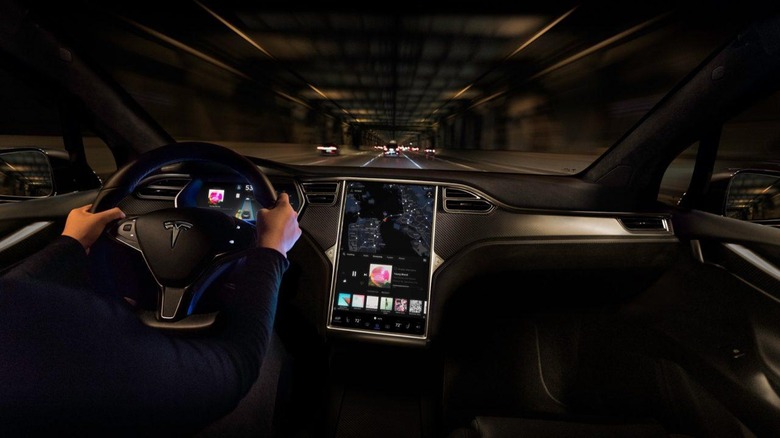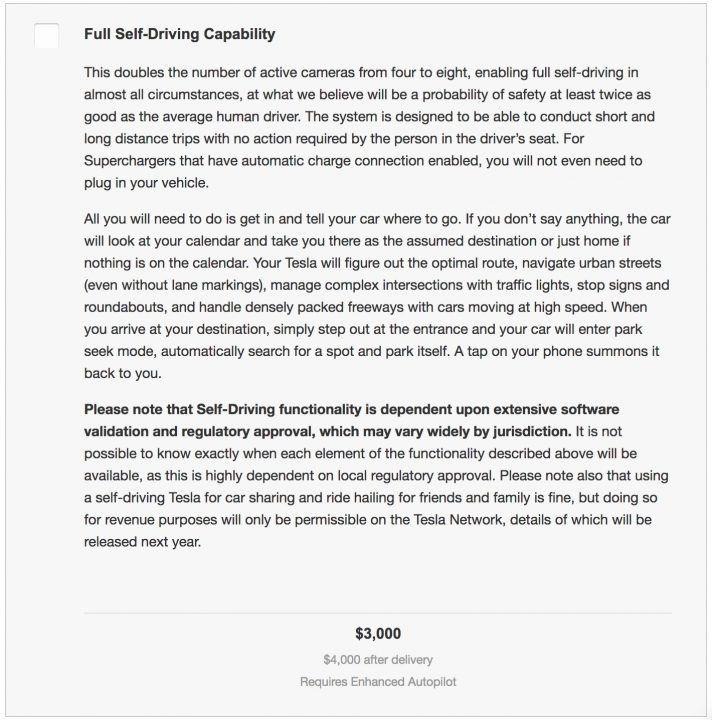Tesla Autopilot Got A Secret Upgrade En-Route To Autonomy
Tesla has quietly rolled out a new Autopilot system, fitting more recent cars with updated – and more powerful – hardware with the long-term goal of full autonomous driving. The automaker has been one of the most vocal in promising self-driving abilities for its vehicles, with Elon Musk on record as suggesting that the second-generation Autopilot system that debuted in late 2016 would one day be sufficient for an entirely autonomous car. However, what was not publicized was that Tesla was working on another updated "brain" for Autopilot.
Musk's big promise came as Tesla introduced its switch to the so-called Autopilot HW2. "All Tesla vehicles exiting the factory have hardware necessary for Level 5 autonomy," Musk said, referring to the SAE standards of self-driving vehicles. Level 5 would suggest the car is able to handle any situation on the road without human involvement. Currently, Autopilot is generally considered to be a Level 2 system.
It was a comprehensive upgrade from Autopilot HW1, certainly. Tesla fits its cars with eight surround cameras for a 360-degree field of view with up to 250 meters of range. Twelve ultrasonic sensors are also included, with double the range of their HW1 predecessors. A forward-facing radar was upgraded to better handle heavy rain, fog, and dust.
To handle the data from all those sensors, Tesla also updated Autopilot's brain. It switched to NVIDIA's Drive PX2 system, using Titan chips, with a quoted 40x the power of the hardware used to-date. In all, the change from HW1 to HW2 was so extensive that, much to the chagrin of existing owners, there was no way to retrofit the new technology. Doing so, Musk has repeatedly told Tesla drivers complaining of the lack of such an option, would end up more expensive than simply selling the first-gen Autopilot car and buying a newer model.

Now, to confuse things a little more, there's another version of Autopilot, though it's one Tesla had attempted to keep quiet. Sources informed Electrek of what was internally being referred to as "Autopilot HW 2.5", a new hardware suite with more power and even a secondary GPU. That apparently coincided with production of the latest Tesla Model 3 beginning.
In a statement, Tesla confirmed the newer system but attempted to minimize its differences to HW 2. "The internal name HW 2.5 is an overstatement, and instead it should be called something more like HW 2.1," the spokesperson insisted. "This hardware set has some added computing and wiring redundancy, which very slightly improves reliability, but it does not have an additional Pascal GPU."
As well as being fitted to the Model 3, the spokesperson also confirmed, the newer processing is also being included on all new Model S and Model X cars being produced. It's unclear if the driver-facing cabin camera spotted on the Model 3, which Tesla told us wasn't on its other cars, will also be added at some point. Similarly, it's also unclear whether there's any way for new owners to see which version of the hardware they have, without physically accessing it.

News of another change is unlikely to go down well among Tesla owners, many of whom have already paid more for full autonomous driving support even though it's not, currently, operational. The so-called "Full Self-Driving Option" is a $3,000 option on the Model S and Model X, in addition to requiring the $5,000 Enhanced Autopilot system. "Please note that Self-Driving functionality is dependent upon extensive software validation and regulatory approval," the automaker warns, "which may vary widely by jurisdiction."
Tesla appears to have pre-empted that possible frustration around this new revelation, whether it's called HW 2.5 or HW 2.1. It insists that the expectation remains that the current HW 2.0 system will be sufficient for the autonomous driving promises it has made. If not, the spokesperson says, owners who have already paid will get a hardware upgrade.
"However, we still expect to achieve full self-driving capability with safety more than twice as good as the average human driver without making any hardware changes to HW 2.0," they said. "If this does not turn out to be the case, which we think is highly unlikely, we will upgrade customers to the 2.5 computer at no cost."
Unlike the switch from the original Autopilot to the second-generation system, that process will be a lot more practical. Tesla opted to mount the HW 2.0 computer underneath the glove compartment, so that it could later be switched out in the event of a hardware change. As for when full self-driving will actually be enabled, that's still uncertain, though Tesla has recommitted its intention to take an autonomous car from Los Angeles to New York before the end of the year.
